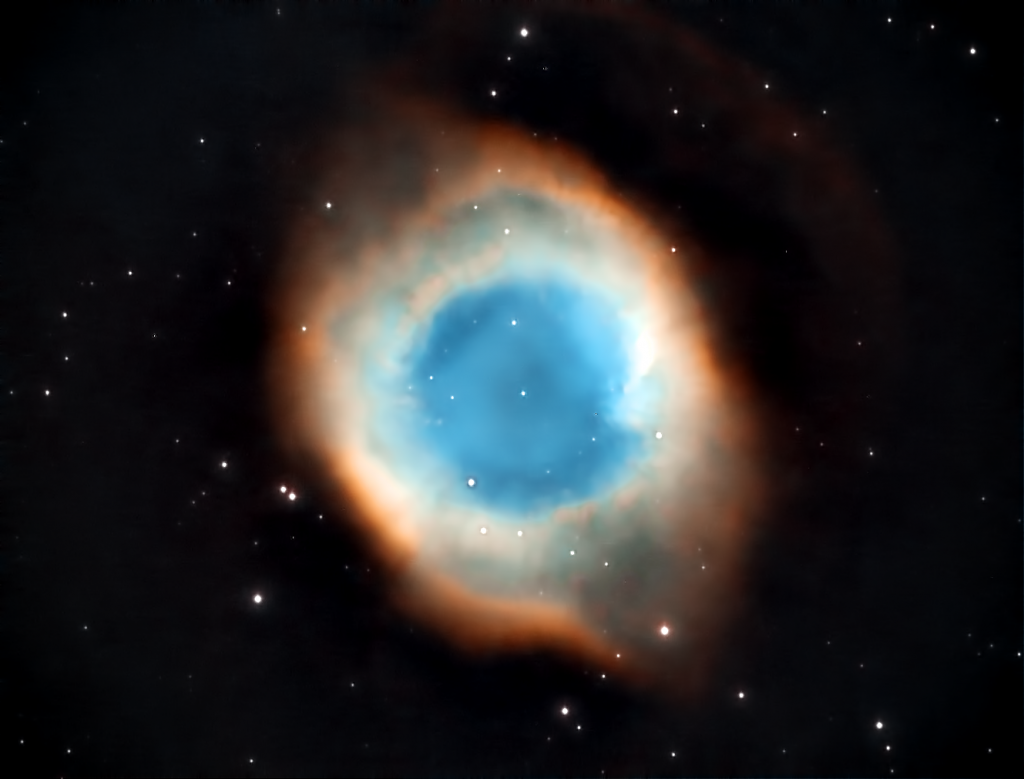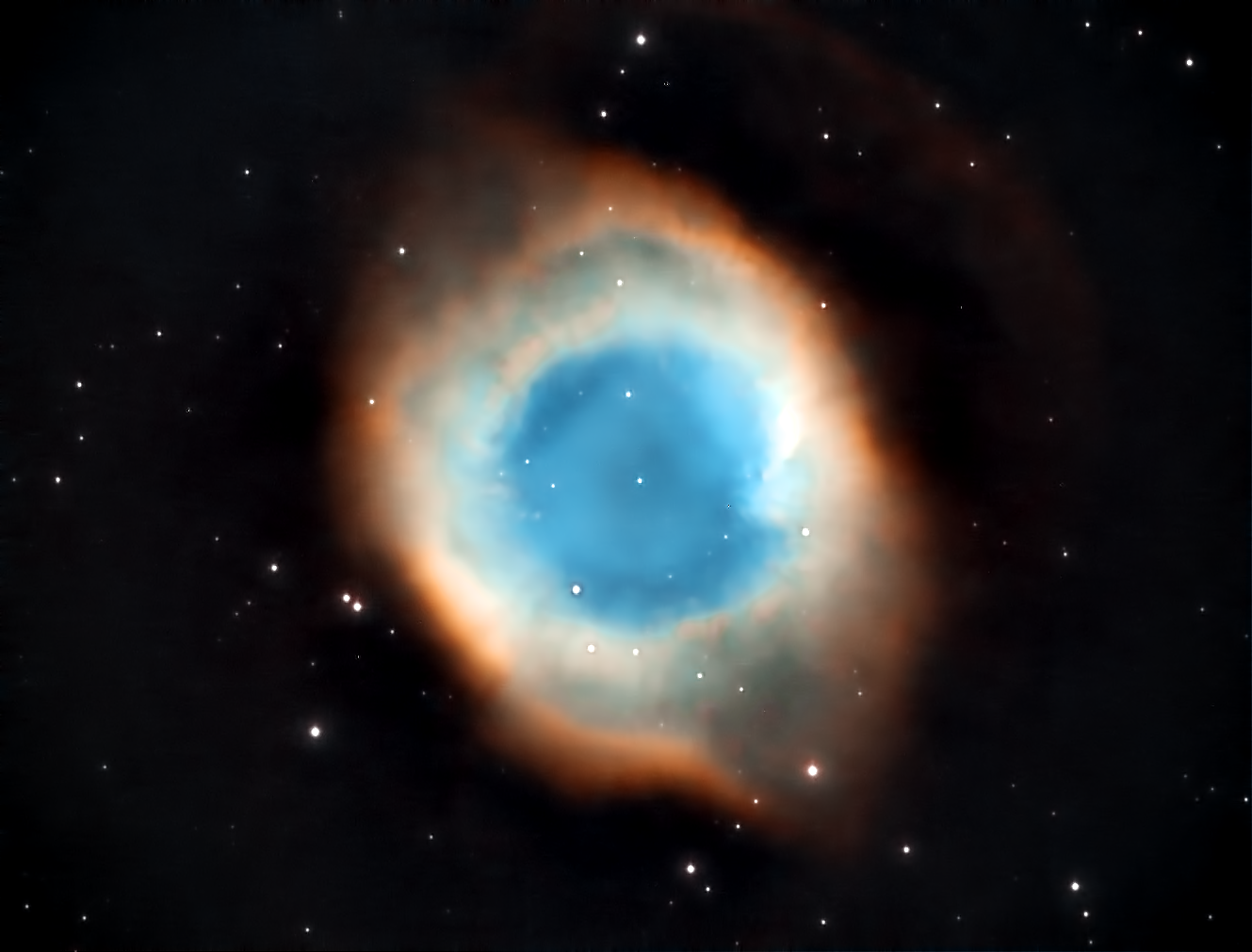
Similar Posts
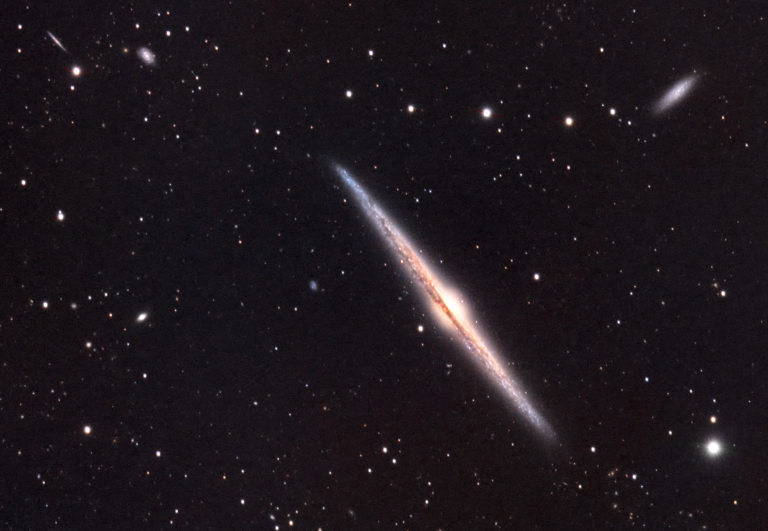
The Needle Galaxy
Somewhere between 30 and 50 million light-years away, within the constellation Coma Berenices, lies NGC4565 – commonly known as the “Needle Galaxy”. It’s a spiral galaxy, but viewed edge-on – so we see its central bulge and the edge of the galaxy’s disc extending from it. Clouds of dust within the galaxy obscure the middle…

The galaxy M91
Located 63 million light-years away in the constellation Coma Berenices, M91 is part of the Virgo cluster of galaxies – and if you zoom in and explore this image, you’ll find many other galaxies surrounding it, and also far in the distance beyond it.
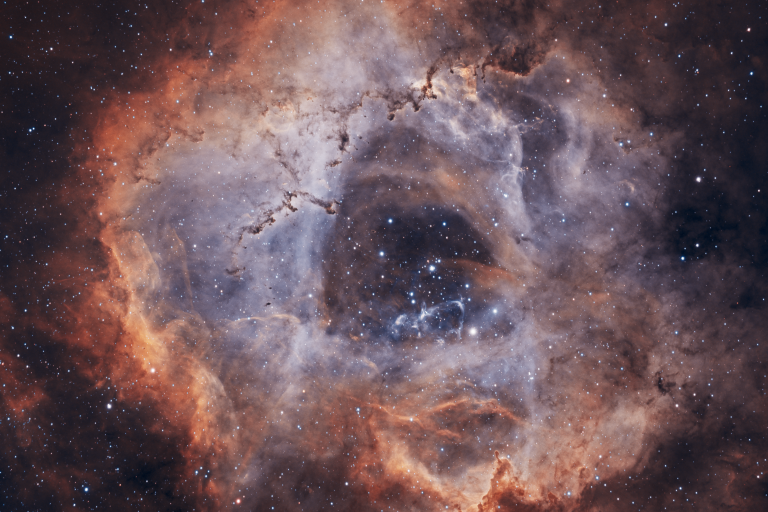
The Rosette Nebula
The Rosette Nebula is about 5,000 light-years away in the constellation Monoceros. It’s the birthplace of the cluster of stars it contains. While it doesn’t look much like a Rose in this view, the false-color narrowband image below brings out more of its structure. 7 1/2 hours of total exposure time, on New Year’s Eve…

M92: A pretty, but overlooked globular cluster
Had a few hours of clear skies last night, and captured a globular cluster I hadn’t imaged before: M92. It’s a pretty one, and I’m surprised it’s not more popular. It’s in the constellation Hercules, and I suspect it just gets overshadowed by its even more spectacular neighbor, M13. Globular clusters were enshrouded in mystery…
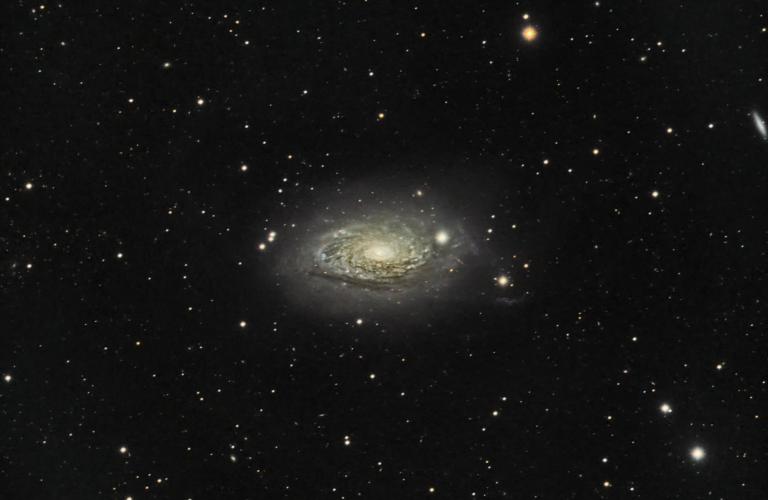
Revisiting M106 and the Sunflower
Now that our new backyard observatory is up and running, and we’re under darker skies than in our previous home, I’m revisiting some galaxies I’ve imaged before to see how things compare. Galaxies are tough… any amount of light pollution or moonlight really limits your ability to capture faint, wispy details. But the less light…

A “ring galaxy” 600 MILLION light-years away
Hoag’s Object is the weirdest galaxy I know of; it is a “ring galaxy” – a very rare galaxy type that’s just a galactic core of stars, surrounded by a ring of stars that’s seemingly disconnected from its core. This galaxy has always captured my imagination. Just look at this image from the Hubble Space…

